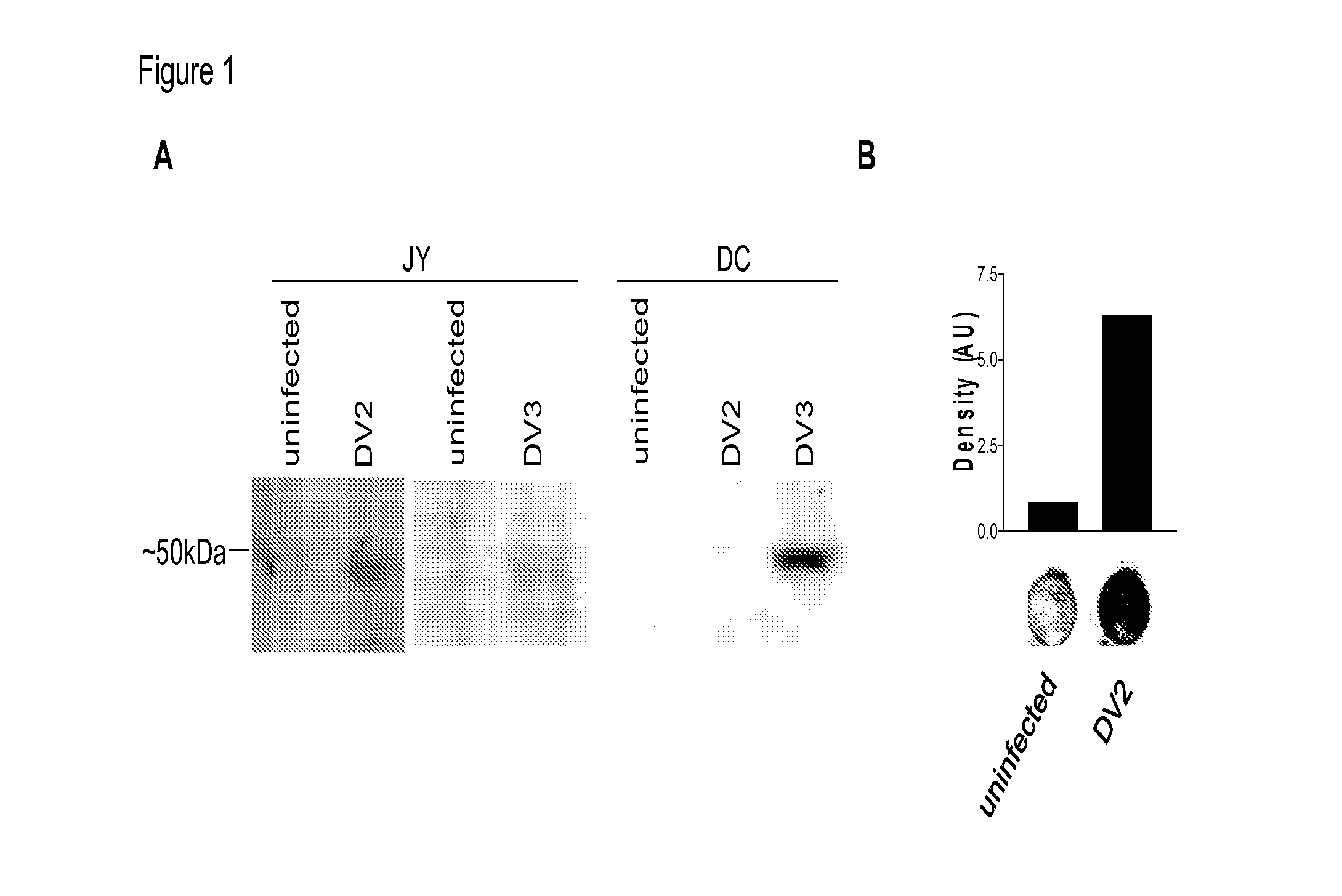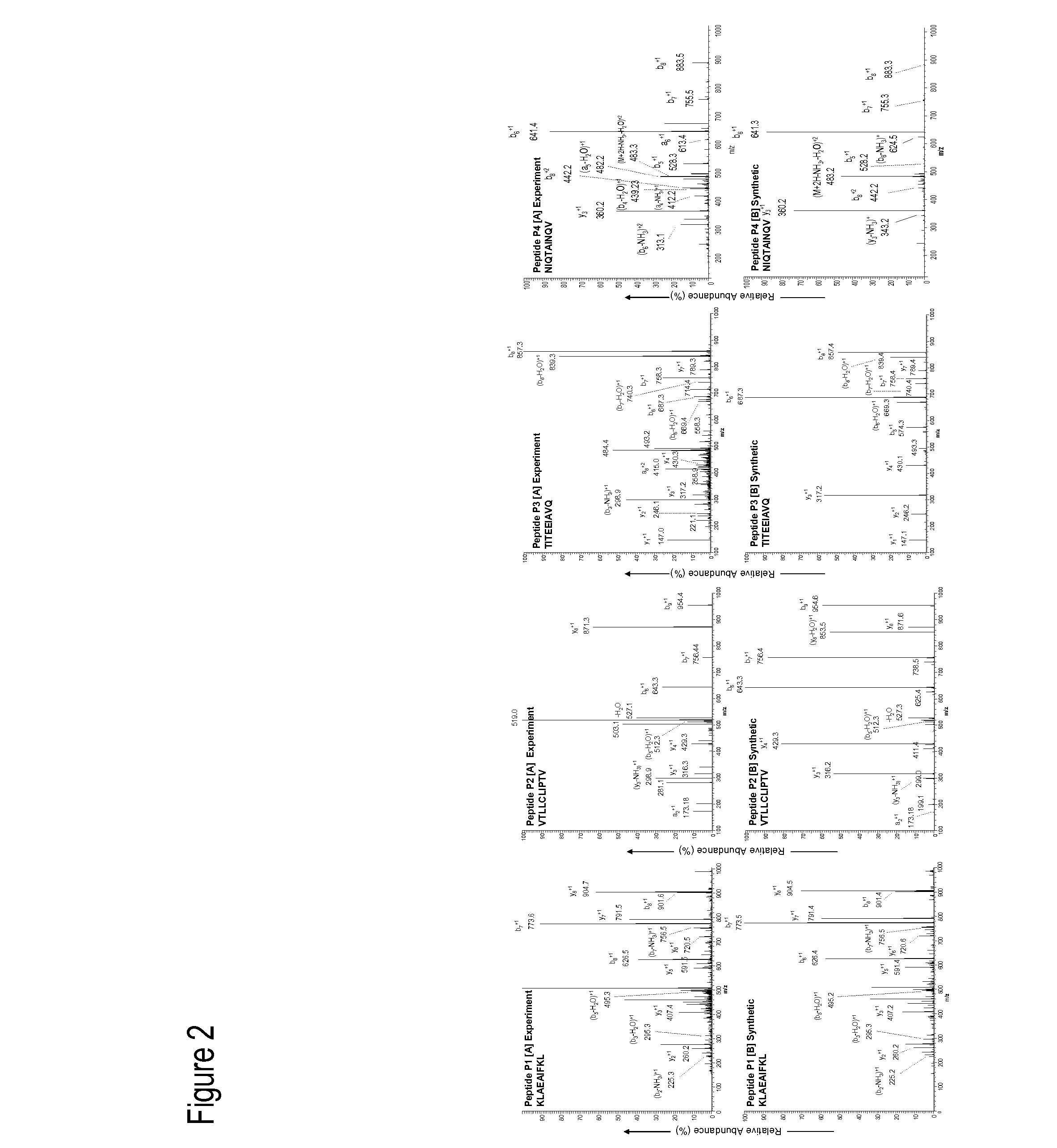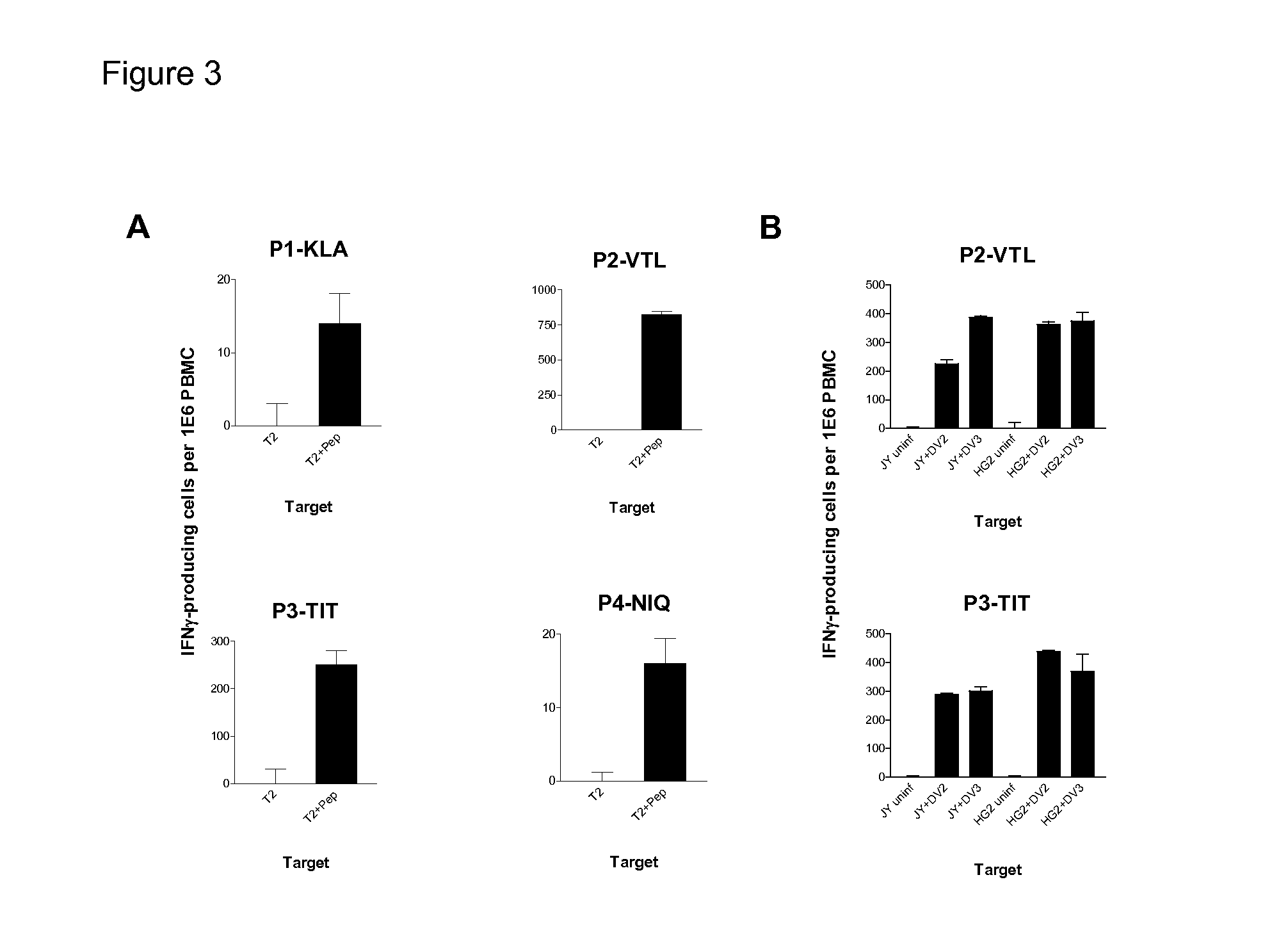Cytotoxic T Lymphocyte Inducing Immunogens For Prevention Treatment and Diagnosis of Dengue Virus Infection
a cytotoxic t lymphocyte and immunogen technology, applied in the field of immunogens, can solve the problems of limited t cell immunity, increased risk of dhf and dengue shock syndrome (dss), and inability to detect cross-reacting peptides in time,
- Summary
- Abstract
- Description
- Claims
- Application Information
AI Technical Summary
Benefits of technology
Problems solved by technology
Method used
Image
Examples
example
[0083]Dengue virus serotype 2 (DV2) (strain-16681), as well as DV type 3 (DV3) (strain-16562), were propagated in Vero cells and collected at 4 days post infection (dpi). Titer was determined using a plaque assay in Vero cells. Thai isolates of all four DV serotypes were propagated. All infections were carried out at five MOI for 1 hr, after which, virus was removed and cells were incubated for additional 48-72 hrs.
[0084]HepG2, hepatoma cells, JY, EBV transformed lymphoblastoid B cells, T2, lymphoblasts, and K562, human leukemia cells were obtained from ATCC. HepG2 were maintained in DMEM:F12 medium while JY, T2, and K562 were maintained in RPMI 1640 (Mediatech, Manassas, Va.) supplemented with 10% fetal bovine serum, and maintained at 37° C. in a humidified incubator with 5% CO2.
[0085]Dendritic cells (DC) were generated from leukopheresis obtained from HLA-A2+ healthy donors (Research Blood Components, LLC, Brighton, Mass.).
[0086]Cell lysates from uninfected and Dengue-infected cel...
PUM
| Property | Measurement | Unit |
|---|---|---|
| hydrophobic | aaaaa | aaaaa |
| mass spectrometry | aaaaa | aaaaa |
| high performance liquid chromatography | aaaaa | aaaaa |
Abstract
Description
Claims
Application Information
 Login to View More
Login to View More - R&D
- Intellectual Property
- Life Sciences
- Materials
- Tech Scout
- Unparalleled Data Quality
- Higher Quality Content
- 60% Fewer Hallucinations
Browse by: Latest US Patents, China's latest patents, Technical Efficacy Thesaurus, Application Domain, Technology Topic, Popular Technical Reports.
© 2025 PatSnap. All rights reserved.Legal|Privacy policy|Modern Slavery Act Transparency Statement|Sitemap|About US| Contact US: help@patsnap.com



